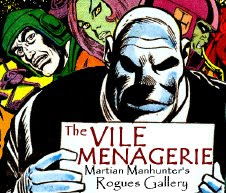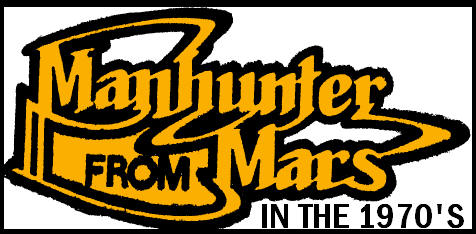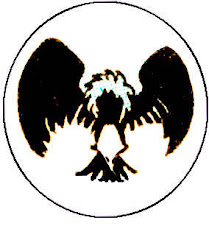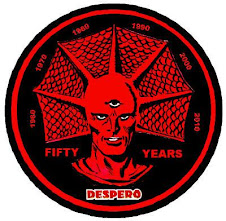"In the early years of my residence on Earth, I traveled to Africa, took the form of a gorilla and lived as one of them among a tribe in the wild." Though he was treated as one of the lowest status, J'Onn J'Onzz was at least tolerated, and even embraced as a friend by some. When human researchers came to study the apes, the G'Orilla studied them back. Then the poachers came while the Martian was elsewhere, slaughtering scientist and gorilla alike in pursuit of valuable... novelties. Severed heads. Ashtrays fashioned out of paws. The Sleuth from Outer Space tracked the poachers, and used his telepathy to force them to turn themselves in to authorities. He mused that the savage beast assumptions regarding gorillas was more a projection of human's own aggression and avarice than what he had seen amongst the tribe.
Even the various assaults and forced conversions during JLApe: Gorilla Warfare could all be understood as repercussions of the assassination of King Solovar-- but by whom? Who stood to gain? After purging his recent gorilla hybrid-form from his "shape-memory matrix" and restoring his super-hero default, J'Onn J'Onzz traveled to the JLA Watchtower to collaborate with The Batman on this impenetrable mystery. Following Green Lantern Annual #8, "The Morphic Resonance Array was destroyed, but not before a significant portion of the world's population had been transformed into gorillas. Chaos currently reigns. In response to your earlier comments, I'd like to point out that Green Lantern's condition was the reason for my hasty departure from the U.N." [JLA Annual #3 (September, 1999)]
Despite The Dark Knight Detective's constant condescension and dimminishment of his abilities, The Sleuth from Outer Space had also deduced the identity of the mastermind behind this incident, but felt the need to build a case in order to understand where to locate and how to defeat the culprit. To this end, private investigator John Jones, and other alien alter egos, interviewed known associates like Bobo T. Chimpanzee, Monsieur Mallah, Sam Simeon, and William "Congo Bill" Glenmorgan for insights. Sam fanboyed over the Manhunter from Mars, asking him to pose for a sketch.
While John Jones was playing Simian Team-Up, the JLA were doing real stuff, like averting nuclear catastrophe and joining Grogamesh in evacuating Gorilla City as a precaution. It was here that the Sleuth solved Cluedo, explaining that it was Gorilla Grodd in the coup with the assassination. Envy was the motive, and thanks to having absorbed all the mental energy of the gathered gorillas and neo-simians globally, Grodd had the power of a god to blast Martian Manhunter, who reverted to his natural form. However, fully ascending to a deity seemingly meant Grodd being stripped of his identity, and when the Martian pointed this out while "worshiping" the Super-Gorilla for his sacrifice, Grodd recoiled and collapsed. This was done in a sequence of three double-page spreads, joining the many Image-style visuals for big annual storytelling that did thankfully help the pacing on these thickish books. A babbling, vegetative Grodd was locked away in an asylum, and Ulgo sought to normalize relations between Gorilla City and the human world.
"Fear and Loathing on the Planet of the Apes" was by Len Kaminski, Gus Vasquez, & Mark Propst. As I was suffering discontent about a year into the run of the 1998 ongoing series, I especially enjoyed this, the final ever Martian Manhunter/Magnificent 7 JLA solo annual. Which I largely lay at the feet of Ostrander/Mandrake, but that's an admittedly minority opinion. Kaminski was a writer that I always tended to enjoy, who should have had a better career, and who I thought had a really good handle on the Alien Atlas. He and fill-in writer John Arcudi were the guys I kept hoping would take over the series when Ostrander was done with it, only for the title itself to give out after three years. But it was so good, the DC Message Board lectured me. Here, I loved stuff like J'Onn inserting himself into non-human Earth populations, and I really appreciated the trend of pitting J'Onn against Grodd. He's best known as a Flash villain, but the mental powers and outsider perspective made their pairings natural. Obviously it would have been even better if these Silver Age revivalists had, y'know, revived actual Silver Age Martian Manhunter villains, but that's asking too much. Grodd's one of my favorite DC villains, going all the way back to Challenge of the Super Friends, so bring him on.
Vasquez has a rubbery quality that suits J'Onn in a way it wouldn't any other JLAer, and I felt it was more of a piece with the popular style of Howard Porter on JLA broadly and Don Hillsman III very specifically on the Martian Marvel in this time period. I especially liked his Natural Form Martian, which I digitally "cut out" in one of my first forays into Microsoft Paint, to post on my late '90s Web-TV site, so we go way back. For the artist, it was mostly just back-ups and one-offs going forward, though he was still kicking around as late at the 2010s. Kaminski did some more JLA work here and there, but was mostly out of comics after the turn of the century, and I understand is currently committed to a wheelchair in a nursing home against his will. That certainly puts things in perspective. But hey, sorry for the delay in wrapping up this coverage. It's been a lot of apes for a long time. Despite generally liking this storyline, I had misgivings about taking it on in the blogging medium, especially once I felt compelled to look at each book for my different venues. Well founded misgivings, hence the delay.
Sunday, May 19, 2024
Tuesday, May 7, 2024
Green Lantern Annual #8 (October, 1999)
Like most of his fellow JLAers, Green Lantern Kyle Rayner briefly regressed to being controlled by Gorilla City while in his ape form, but took the problem further than most. Where the other heroes managed to shake both the influence and the form in relatively short order, the neophyte mostly gave in, becoming a proper gorilla soldier against mankind. As noted by the Sleuth from Outer Space in his own forthcoming, conclusive annual, "However, by this time, the orbital morphic resonator array is operational, defended by a force of space marines led by General Zolog-- aided by Green Lantern, who had been subverted to the gorilla cause." Building a close camaraderie with several of his fellow gorilla grunts, the Green Lantern would play an important role in General Zolog's bid to succeed as his contemporaries repeatedly failed. Essentially, as the last ape standing, all the future glory or blame fell on Zolog's fuzzy shoulders.
In a show of (increasingly limited) power, Zolog ordered the ape-ification of Honolulu, but had to deactivate cloaking to do so, allowing their detection by the Sleuth from Outer Space at the JLA Watchtower. I'm not sure who put it together, but the Alien Atlas has an unconventional team ready to go, made up of Golden Age Green Lantern Alan Scott, Warrior, and the Metal Men. J'Onn once worked with Scott in the 1970s, and of course had associated with him via the JLA/JSA crossovers. Guy Gardner of Justice League International was well familiar, and I was well pleased that he was played as his usual crass self, rather than the Beau Smith glow-up. The Metal Men was the curve ball, though they did go back to JLA: Year One.
Just as Gorilla Lantern engaged this force, he was teleported to the Watchtower, where he was greeted by a gorilla claiming to be part of a force that now occupied the facility. However, this ape slipped up in calling the Lantern "Kyle," rather than his ape name, and his power ring set tentacles upon the disguised Martian. However, J'Onn continued using Kyle's name, and helping him to remember who he truly was. The ring did the rest. "Thanks to my rather duplicitous efforts, Green Lantern was restored to normal, as have been the rest of the JLA." Kyle had initially been concerned for his ape comrades, and now for all of his friends, and rushed back into combat. Unfortunately, General Zolog was something of a simian Kissinger, willing and able to sacrifice many of his own men in a last bid for overall victory. Green Lantern helped mitigate the fallout, but still lost some of his former men, wounding hearts on both sides of this gorilla warfare.
"Grunts" was by Keith Giffen, Octavio J. Cariello, Jr., John Nadeau, Marcelo Campos, & Jordi Ensign. J'Onn's synopsis was written by Len Kaminski. Obviously, my coverage of "JLApril" is late and entirely prompted by the podcasting event that I linked to last week, but I wish I'd run even later, so that I could take advantage of the sharp digital scans in the newly released collection of these comics. The 1999 version were printed on lousy paper that gave everything a gray tinge and made the colors a drab mess. I don't always love the glossy sheen of modern printing, but trust that it's an improvement. Anyway, this was a nice read, my favorite of the satellite solo annuals (obviously not counting the bookends with our favorite Martian.) Giffen on his own doesn't sing like he did with his better collaborators, but his weary, cranky voice suits this material. Unfortunately, there's several instances of the editor blowing it, allowing dialogue balloons intended for one character to come out of the "mouth" of another. Thankfully, the dialogue is distinct enough for the reader to tell where the fault lies. Despite often being thought of as a funny guy, Giffen plays this one fairly straight, lending an unexpected poignancy. But also, he brings in JLI favorite Guy, who naturally plays well with our boy. Star Wars artist Nadeau leans into the grit, so that it's jarring when the style switches to more clean cut super-heroics mid-sequence. Further, Cariello demonstrated his own moody chops on Deathstroke, so maybe there was a heavy-handed inker? It all looks good, just different. Oddly enough, both pencillers moved out of comics and into painting after this. Man, it was so nice to see J'Onn working with people with whom he had a history, instead of whichever team-up tickled Ostrander's fancy on a given month.
In a show of (increasingly limited) power, Zolog ordered the ape-ification of Honolulu, but had to deactivate cloaking to do so, allowing their detection by the Sleuth from Outer Space at the JLA Watchtower. I'm not sure who put it together, but the Alien Atlas has an unconventional team ready to go, made up of Golden Age Green Lantern Alan Scott, Warrior, and the Metal Men. J'Onn once worked with Scott in the 1970s, and of course had associated with him via the JLA/JSA crossovers. Guy Gardner of Justice League International was well familiar, and I was well pleased that he was played as his usual crass self, rather than the Beau Smith glow-up. The Metal Men was the curve ball, though they did go back to JLA: Year One.
Just as Gorilla Lantern engaged this force, he was teleported to the Watchtower, where he was greeted by a gorilla claiming to be part of a force that now occupied the facility. However, this ape slipped up in calling the Lantern "Kyle," rather than his ape name, and his power ring set tentacles upon the disguised Martian. However, J'Onn continued using Kyle's name, and helping him to remember who he truly was. The ring did the rest. "Thanks to my rather duplicitous efforts, Green Lantern was restored to normal, as have been the rest of the JLA." Kyle had initially been concerned for his ape comrades, and now for all of his friends, and rushed back into combat. Unfortunately, General Zolog was something of a simian Kissinger, willing and able to sacrifice many of his own men in a last bid for overall victory. Green Lantern helped mitigate the fallout, but still lost some of his former men, wounding hearts on both sides of this gorilla warfare.
"Grunts" was by Keith Giffen, Octavio J. Cariello, Jr., John Nadeau, Marcelo Campos, & Jordi Ensign. J'Onn's synopsis was written by Len Kaminski. Obviously, my coverage of "JLApril" is late and entirely prompted by the podcasting event that I linked to last week, but I wish I'd run even later, so that I could take advantage of the sharp digital scans in the newly released collection of these comics. The 1999 version were printed on lousy paper that gave everything a gray tinge and made the colors a drab mess. I don't always love the glossy sheen of modern printing, but trust that it's an improvement. Anyway, this was a nice read, my favorite of the satellite solo annuals (obviously not counting the bookends with our favorite Martian.) Giffen on his own doesn't sing like he did with his better collaborators, but his weary, cranky voice suits this material. Unfortunately, there's several instances of the editor blowing it, allowing dialogue balloons intended for one character to come out of the "mouth" of another. Thankfully, the dialogue is distinct enough for the reader to tell where the fault lies. Despite often being thought of as a funny guy, Giffen plays this one fairly straight, lending an unexpected poignancy. But also, he brings in JLI favorite Guy, who naturally plays well with our boy. Star Wars artist Nadeau leans into the grit, so that it's jarring when the style switches to more clean cut super-heroics mid-sequence. Further, Cariello demonstrated his own moody chops on Deathstroke, so maybe there was a heavy-handed inker? It all looks good, just different. Oddly enough, both pencillers moved out of comics and into painting after this. Man, it was so nice to see J'Onn working with people with whom he had a history, instead of whichever team-up tickled Ostrander's fancy on a given month.
Subscribe to:
Posts (Atom)


































